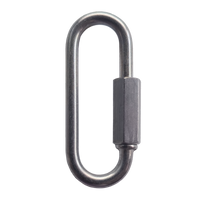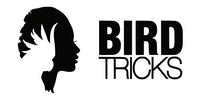
BEES:
Bees are not terribly fast moving and are really no match for the speed of your parrot. Any bee that gets close enough to your bird will be moving right on it’s way as soon as it realizes the speed and agility with which a parrot a parrot can maneuver that snapping beak. And if a bee were to make an undetected landing on your bird, it’s stinger isn’t really long enough to penetrate the feathers to make contact with the skin.
Bees really have no interest in stinging unless there is a threat perceived. A parrot that is outside sunning itself doesn’t really represent a threat and a bee might only make an appearance to check out what was for lunch in your birds bowl. In this regard, just let nature be and your parrot can look out for himself.
I must tell you, though, that a notification came through the BirdTricks customer service office not too long ago that was just horrifying. We learned that the large outdoor aviaries of a breeder were deluged with attacking bees resulting in the deaths of 12 macaws. We aren’t sure what caused the bees to attack, but birds can be overcome by swarming bees that will burrow under feathers and sting – the result can be fatal.
It’s a good idea to walk the area surrounding your aviaries to know if there are hives nearby. If bees decide to attack, your caged birds are helpless to escape.

MOSQUITOES/GNATS:
Mosquitoes and gnats are annoying to everyone, parrots included. They, unlike bees, are not particularly concerned with the snapping beak and will remain in the area and do what they do best – bite. If you have a species that have patches of bare skin on their faces, like macaws, or if your bird is a plucker, you might notice the irritation of bites on their faces and bodies.
Apart from using bug zappers there really isn’t much you can do except to bring your birds in at sundown when the bugs are out in full force. The oil in citronella candles produce fumes that are unsafe for birds, and backyard foggers will coat the aviaries and perches with toxins. Neither are acceptable solutions.
You should know that birds are susceptible to West Nile Virus if they are bitten by a mosquito that has been feeding on an infected wild bird. It is a contagious disease that causes inflammation to the brain and can be fatal. It is considered to be uncommon in many places, but in those areas, such as Florida, where mosquitoes flourish there have been several reported cases.

FLIES/FRUIT FLIES:
Flies are not only an annoyance, but they spread bacteria and disease. They, themselves, are not harmful to your parrot, but are more dangerous to your parrot’s environment – or more precisely, the part of your parrots’ environment that ends up in its mouth.
Flies are generally the result of uncleanliness with food left lying around on the ground and un-emptied garbage cans being the major contributors to the problem in the average bird home. If you feed them they will come…and lay eggs…and never leave.
Fortunately, fruit flies are not disease spreaders because with the foods we commonly feed our parrots, they do appear from time to time. The sticky traps work wonderfully in collecting fruit flies making it easy to rid yourself of them. Be sure to keep the traps, which look like wonderfully fun bird toys, well out of reach. There have many unhappy birds who have lost patches of feathers during the removal of fly traps that they have gotten into.
For the most part, under normal conditions, there is no reason to worry about flying insects with your birds. Birds are well adept at handling all things outdoors-y. That is their original stomping ground, after all.
Author Patty Jourgensen specializes in avian health, behavior and nutrition and has been working with and caring for rescue birds since 1987.



4 comments
I realize that this blog is nearly a decade old, but as both a bird-brained parrot dad and an apiologist (beekeeper), I thought I’d let you know why the bees probably attacked those macaws. (Which is also why they might be inclined to attack other parrots.) Bees are hugely communicative, they chit-chat through dancing, buzzing, and as is key here, via chemical signaling. Their threat or “swarm and attack” pheromone is an ester (a type of organic chemical compound) called isopentyl acetate. This is most commonly recognised by humans as smelling like bananas, though many think of pears or apples. This is because all of these fruits contain the compound in varying quantities. Bees that are getting cranky will actually put their rears (stingers), where glands which secrete the substance are located, into the air and fan them with their wings to spread the pheromone and rile up the rest of the ladies in the colony for a fight. This substance is also released when a bee stings (which, as most know, is a suicidal attack method for the bees, as it is destructive to their bodies). By stinging, they’re not only hoping to deter the perceived threat, but also summon other bees to make sure that their message is clear: we WILL protect the hive. That said, if the birds had these fruits in their food - or worse yet, their fresh forms hanging about and being eaten as treats- while in an aviary anywhere near bees, it is quite likely to end very poorly. Most beekeepers know: if you smell banana in the bee yard, it’s time to make like a tree and leave until things calm down. Quickly. Beekeepers generally teach new beekeepers to wait to eat these fruits until after they’re finished in the bee yard for the day, and to never actually have them near the bee yard. If you do, you’re just asking for a bad day. I’ve even had one particularly cranky colony that was admittedly too close to my home (they moved-in literally overnight when I wasn’t ready, I hadn’t even finished preparing their hive!) that got extremely testy from me carrying groceries in. Fortunately, I had foreseen this and saved the fruit for last so that I wouldn’t have to go outside for the rest of the night. The cloud of bees on my deck was not my idea of a good time.
have any of you tried Diatomaceous earth for ants, mites fleas etc. they use it on chickens, in grain bins it is eatible. anyone used it on parrots? I got some because I had carpet beatles. it is neat stuff. not a chemical but ground up shells. even people eat it.
Thank for a very interesting information. I didn’t know about the harmful effect of insects towards parrots until now. Really appreciate it!
My big U-2 loves to wave and airplanes and blimps as they fly over, but is afraid of butterflies. I think it’s hilarious. I’ve found that Terro ant bait works really well. You put several drops of it on a piece of card stock, and the ants eat it and take it back to the queen. Just keep the card far enough away from the cage so nosey parrots can’t reach it.
Leave a comment